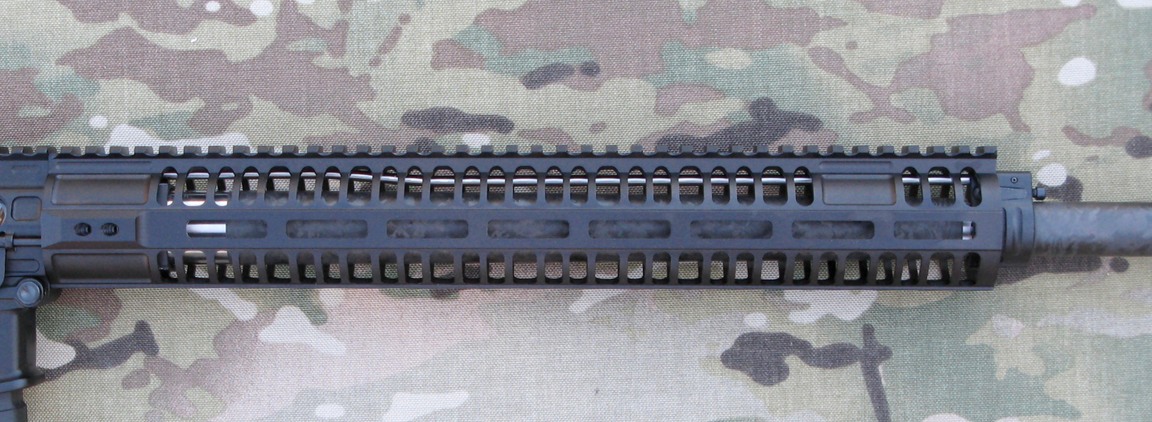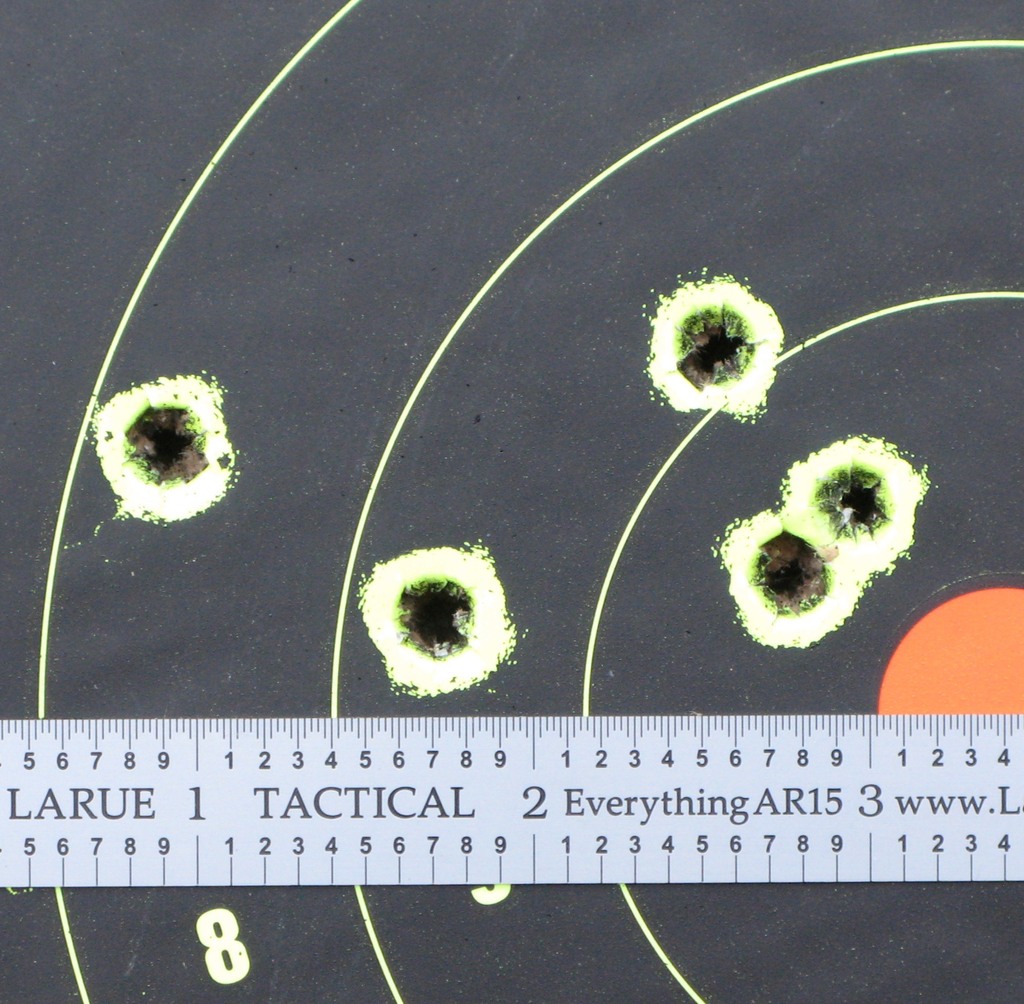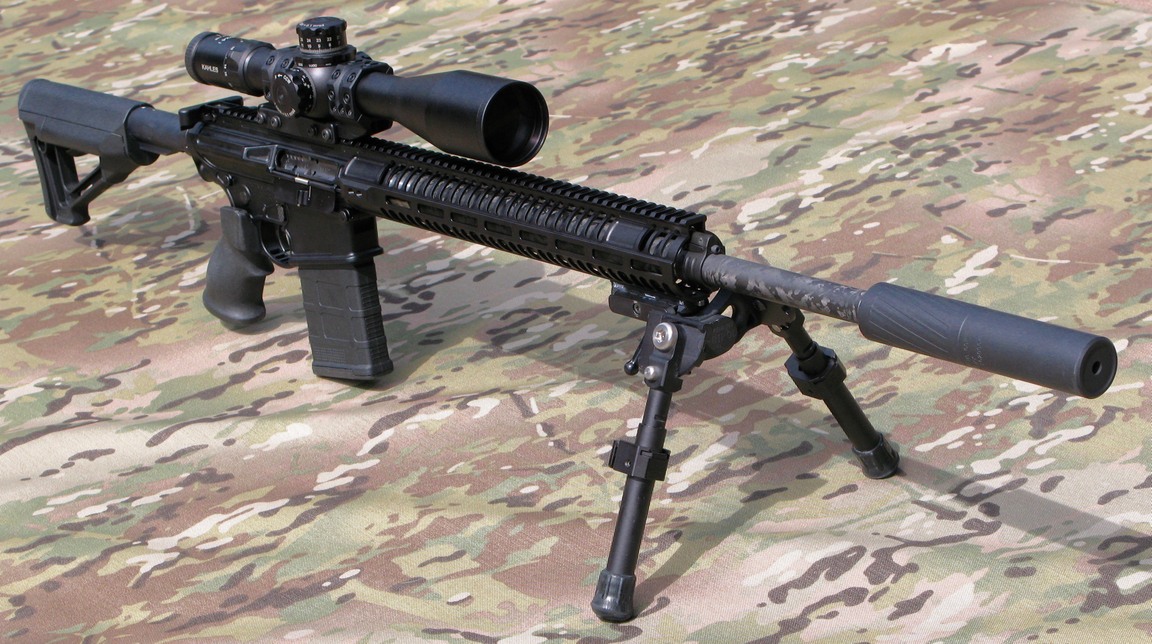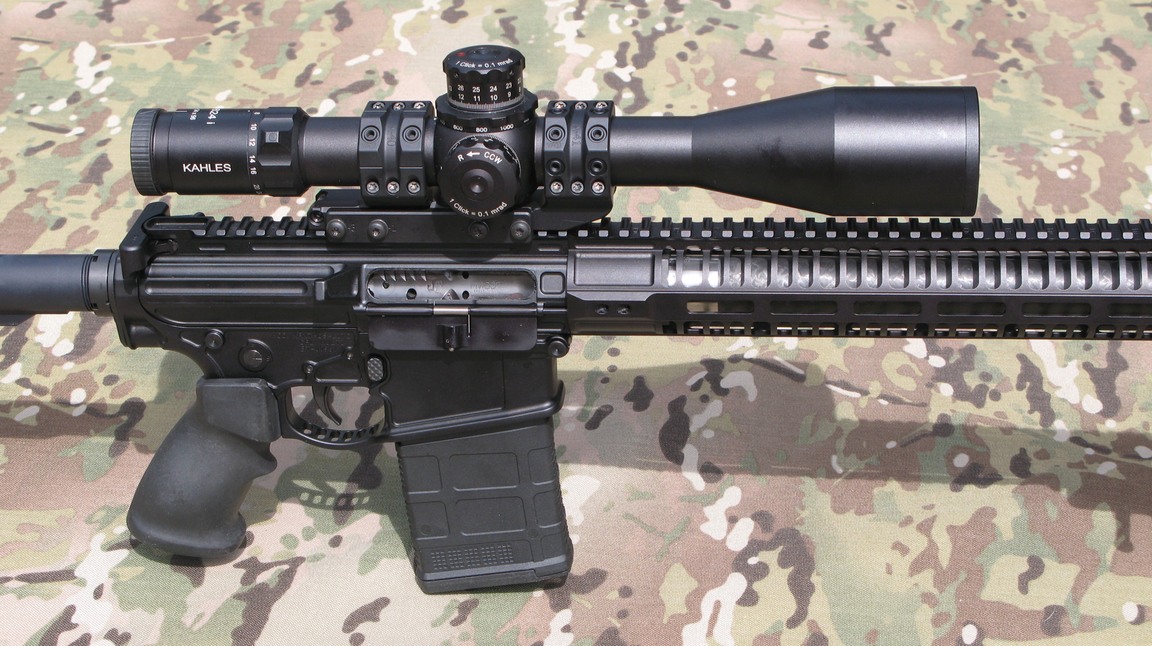I've been amazed at how well a sub-five pound AR' will shoot, both in terms of reliability as well as accuracy. But how about a big block gas gun? Can they be made to run reliably, accurately, safely, at the reduced weights made possible by new and innovative components?
Based on my first attempt, I'm encouraged.
The foundation of this latest project is a 16 ounce 2A Armament .308 Xanthos billet receiver set. 16 ounce! 2A hogs out every possible nook and cranny to get this package as light as possible. Typical AR-15 receiver sets weigh 20% more than this. The 2A 15" forend with its titanium barrel nut weighs in under 10 ounces. The heart of the gun, a 22" +2 PROOF Research barrel comes in at just 44 ounces. This barrel is GORGEOUS inside! Looking down it with a borescope reveals just how good a PROOF barrel is in terms of final surface finishing treatments. No one does a throat like this.
While I was interested in saving weight, I was not interested merely building the lightest gun possible. I want it to be accurate. So, I went with a full mass JP bolt carrier for reliability & accuracy and fairly heavy Magpul STR buttstock for the superlative cheek weld. Even then, the bare rifle weighs just 8 pounds 2 ounces. I could knock half a pound off of this by simply going with a Mission First Tactical (MFT) stock. plus another quarter pound going with a low mass carrier.
This rifle has all V Seven titanium parts wherever applicable. I went with a steel SLR adjustable gas block because I was just too impatient to wait for a titanium one to come in from SLR. A Geissele National Match trigger simplifies trigger control, breaking at a crisp 2.5 LB. And a PRI Gas Buster is there to keep the gas out of the shooter's face.
[IMG2=JSON]{"data-align":"none","data-size":"full","src":"http:\/\/photos.imageevent.com\/mstn\/bigblockgasguns\/huge\/IMG_6401.jpg"}[/IMG2]
[IMG2=JSON]{"data-align":"none","data-size":"full","src":"http:\/\/photos.imageevent.com\/mstn\/bigblockgasguns\/huge\/IMG_6404.jpg"}[/IMG2]
[IMG2=JSON]{"data-align":"none","data-size":"full","src":"http:\/\/photos.imageevent.com\/mstn\/bigblockgasguns\/huge\/IMG_6409.jpg"}[/IMG2]
[IMG2=JSON]{"data-align":"none","data-size":"full","src":"http:\/\/photos.imageevent.com\/mstn\/bigblockgasguns\/huge\/IMG_6405.jpg"}[/IMG2]

Based on my first attempt, I'm encouraged.
The foundation of this latest project is a 16 ounce 2A Armament .308 Xanthos billet receiver set. 16 ounce! 2A hogs out every possible nook and cranny to get this package as light as possible. Typical AR-15 receiver sets weigh 20% more than this. The 2A 15" forend with its titanium barrel nut weighs in under 10 ounces. The heart of the gun, a 22" +2 PROOF Research barrel comes in at just 44 ounces. This barrel is GORGEOUS inside! Looking down it with a borescope reveals just how good a PROOF barrel is in terms of final surface finishing treatments. No one does a throat like this.
While I was interested in saving weight, I was not interested merely building the lightest gun possible. I want it to be accurate. So, I went with a full mass JP bolt carrier for reliability & accuracy and fairly heavy Magpul STR buttstock for the superlative cheek weld. Even then, the bare rifle weighs just 8 pounds 2 ounces. I could knock half a pound off of this by simply going with a Mission First Tactical (MFT) stock. plus another quarter pound going with a low mass carrier.
This rifle has all V Seven titanium parts wherever applicable. I went with a steel SLR adjustable gas block because I was just too impatient to wait for a titanium one to come in from SLR. A Geissele National Match trigger simplifies trigger control, breaking at a crisp 2.5 LB. And a PRI Gas Buster is there to keep the gas out of the shooter's face.
[IMG2=JSON]{"data-align":"none","data-size":"full","src":"http:\/\/photos.imageevent.com\/mstn\/bigblockgasguns\/huge\/IMG_6401.jpg"}[/IMG2]
[IMG2=JSON]{"data-align":"none","data-size":"full","src":"http:\/\/photos.imageevent.com\/mstn\/bigblockgasguns\/huge\/IMG_6404.jpg"}[/IMG2]
[IMG2=JSON]{"data-align":"none","data-size":"full","src":"http:\/\/photos.imageevent.com\/mstn\/bigblockgasguns\/huge\/IMG_6409.jpg"}[/IMG2]
[IMG2=JSON]{"data-align":"none","data-size":"full","src":"http:\/\/photos.imageevent.com\/mstn\/bigblockgasguns\/huge\/IMG_6405.jpg"}[/IMG2]

Last edited:






